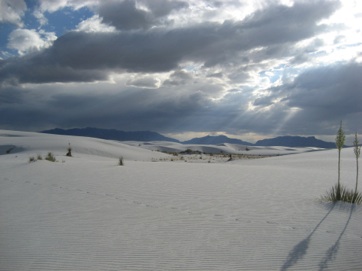rapid evolution, sexual selection, social signals

Postdoctoral research with Erica Bree Rosenblum focussed on sexual selection and rapid diversification of three species of lizards at White Sands National Monument. White Sands is a geologically recent formation (~ 6000 yrs) that encompasses 275 square miles of stark white gypsum sand dunes. Multiple species, including lizards, mice, insects and small mammals, have colonized the sand dunes from the surrounding desert scrub of the Chihuahuan desert in southwestern New Mexico, USA. Our focal taxa are three lizards: the Western Fence Lizard (Sceloporus undulatus), the Lesser Earless Lizard (Holbrookia maculata), and the Little Striped Whiptail (Aspidoscelis inornata). All three species exhibit blanched dorsal coloration, presumably for cryptic background matching, whereas lizards in the surrounding desert are dark in coloration. Combined with evidence for ecological divergence, differences in social signal coloration in all taxa indicate that both sexual and natural selection processes could mediate rapid ecological speciation in this system.
We conducted behavioral experiments with S. undulatus to assay male-male aggression and territoriality to determine 1) whether males can discriminate between local and non-local intruder males, and 2) the strength and directional bias of aggressive behavior. We detected differences in male-male aggression, territoriality, and flight responses to predators between the white sands and desert scrub males. We are currently examining hormonal levels (cortisol and testosterone) between populations as a possible mechanism underlying anti-predator behavioral differences in males.
We also examined differences in courtship behavior of males towards local and non-local females from each population and measured mate preference as a potential reproductive isolating mechanism in this system.
U of Idaho White Sands Team 2009:
L to R: Simone desRoches, Luke Harmon, Erica Bree Rosenblum, Jeanne Robertson
click here for more photographs of the field
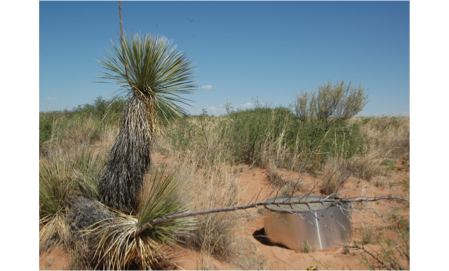
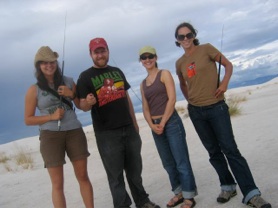
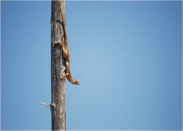
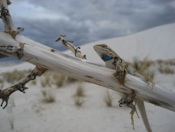
Left: S. undulatus from Jornada LTER.
Right: S. undulatus from white sands national monument
Jornada LTER field station. Lizards exhibit dark dorsal coloration, presumably to match background hues. Photograph shows behavior arena used in trials.
White Sands National Monument contains three species of lizards that exhibit locally adapted, cryptic coloration.
